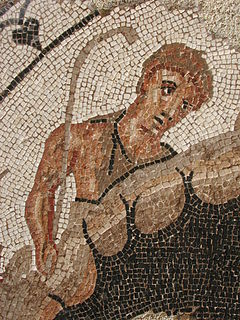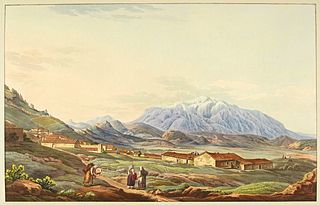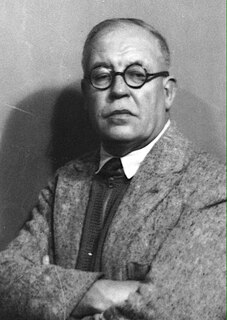 W
WArt History, journal of the Association for Art History, is an international forum for peer-reviewed scholarship and innovative research. Founded in 1978, the journal publishes essays, critical reviews, and special issues that engage with path-breaking new developments and critical debate in current art-historical practice. Art History covers various genres of art and visual culture across all time periods and geographical areas. The journal welcomes contributions from the full spectrum of methodological perspectives, and it is a forum for a wide range of historical, critical, historiographical and theoretical forms of writing. By means of this expanded definition, Art History works to transform and to extend the modes of enquiry that shape the discipline.
 W
WThe Association of Art Historians (AAH) promotes the professional practice and public understanding of art history. It was formed in 1974, is based in London, England, and is a registered charity.
 W
WCastrum doloris is a name for the structure and decorations sheltering or accompanying the catafalque or bier that signify the prestige or high estate of the deceased. A castrum doloris might feature an elaborate baldachin and would include candles, possibly flowers, and in most cases coats of arms, epitaphs and possibly allegorical statues. Many extensive castra doloris can be traced to the customs of 17th century and 18th century or even earlier, since the funeral arrangements of Sigismund II Augustus included a castrum doloris in 1570s.
 W
WCeltic mazes are straight-line spiral patterns that have been drawn all over the world since prehistoric times. The patterns originate in early Celtic developments in stone and metal-work, and later in medieval Insular art. Prehistoric spiral designs date back to Gavrinis.
 W
WThe Dabous Giraffes are a neolithic petroglyph in the Air Massif of Niger by an unknown artist. Estimated completion 8000 BC, the giraffe carvings were first documented by David Coulson in 1997 while on a photographic expedition to the site.
 W
WDesign Issues is a peer-reviewed academic journal covering design history, theory, and criticism. The journal typically includes theoretical and critical articles, book reviews, and illustrations. Design Issues was established in 1984 and is published online and in hard copy by MIT Press.
 W
WThe term of faktura emerged in Russian art criticism before the First World War. David Burliuk used the term as a Russian equivalent of the French word "facture" which refers to the texture of the painted surface. Voldemārs Matvejs used the term in his 1914 text "Printsipy tvorchestva v plasticheskikh iskussvakh: Faktura.
 W
WA flower brick is a type of vase, cuboid-shaped like a building brick, and designed to be seen with the long face towards the viewer.
 W
WThe Mosaic de la Font de Mussa is a Roman mosaic found in Benifaió and that dates of the 1st or 2nd century. It is located into the Museum of Prehistory of Valencia, where is one of the most highlighted pieces.
 W
WThe Forlivese school of art was a group of Italian Renaissance painters and other artists. Most were born in Forlì or near it in the Emilia-Romagna region of Italy. Some other artists went to Forlì to study.
 W
WGesta is a peer-reviewed academic journal in the area of medieval art. It was established in 1963 and is published by the University of Chicago Press. The editors-in-chief are Diane J. Reilly and Susan L. Boynton.
 W
WGoguryeo art is the art of Goguryeo, an ancient Korean kingdom which occupied large areas of present-day Northeast China and Korea. Its distinct style is marked by flowing lines and vivid colors. The prime examples of this style are tomb murals excavated in North Korea and Manchuria, which were produced from the 3rd to 7th centuries.
 W
WThe uniquely rich iconography of Charlemagne is a reflection of Charlemagne's special position in Europe's collective memory, as the greatest of the Frankish kings, first Holy Roman Emperor, unifier of Western Europe, protector of the Catholic Church, promoter of education and of the Carolingian Renaissance, fictional precursor of the crusades, one of the Nine Worthies, a (contested) Saint, and a national icon in Andorra, Belgium, France and Germany.
 W
WThe tradition of Korean jade carving dates back to neolithic finds along the Namgang river basin in Gyeongju. Jade rings and accessories were worn by the higher classes of society, especially women, from the three kingdoms period and reached their peak in the Joseon dynasty, the golden age of jadework. Korean jadework often includes buddhist motifs, cicadas, and peanut-shaped good luck talismans on the small scale, as well as larger-scale architectural pieces.
 W
WKorean sculpture has a long history.
 W
WThe Liggeren refers to the archives of the Antwerp Guild of St. Luke.
 W
WNouvelles de l'estampe is a scholarly journal on prints. It is published by the Comité national de la gravure française and its office is at the prints department of the Bibliothèque nationale de France, which sponsors the journal. The journal is abstracted and indexed in the Bibliography of the History of Art and the Bibliographie de l’histoire de France.
 W
WThe Oxford History of Art is a monographic series about the history of art, design and architecture published by Oxford University Press. It combines volumes covering specific periods with thematic volumes. The history is divided into histories of Western Art, Western Architecture, World Art, Western Design, Photography, Western Sculpture, Themes and Genres, and a critical anthology of art writing. The entire work consists of over 30 volumes.
 W
WJames Poole was a landscape painter of Ecclesall Manor House, Sheffield, West Riding of Yorkshire, England. He was born in Birmingham and died in Sheffield.
 W
WPortraits of the Apostles are a common theme in Christian art.
 W
WThe Protogeometric style is a style of Ancient Greek pottery led by Athens produced between roughly 1030 and 900 BCE, in the first period of the Greek Dark Ages. After the collapse of the Mycenaean-Minoan Palace culture and the ensuing Greek Dark Ages, the Protogeometric style emerged around the mid 11th century BCE as the first expression of a reviving civilization. Following on from the development of a faster potter's wheel, vases of this period are markedly more technically accomplished than earlier Dark Age examples. The decoration of these pots is restricted to purely abstract elements and very often includes broad horizontal bands about the neck and belly and concentric circles applied with compass and multiple brush. Many other simple motifs can be found, but unlike many pieces in the following Geometric style, typically much of the surface is left plain.
 W
WA Ramachandran: A Retrospective (2004), is a two-volume book by Indian art historian R. Siva Kumar. It is a study of the life and works of artist A. Ramachandran. It has more than 500 reproductions and a selection of rare, historical photographs. Selected writings by the artist, biographical notes and chronology of works are also included in the book.
 W
WRodwell & Martin were early 19th century publishers of topographical prints. The firm was based in New Bond Street, London.
 W
WThe scepter of Charles V, also known in the early modern period as scepter of Charlemagne, is one of the most prominent preserved regalia of the Kingdom of France. It was donated by Charles V to the abbey of Saint-Denis on 7 May 1380, shortly before his death. It has been used since for the coronation (sacre) of nearly all monarchs of France until Charles X, only excepting Charles VII and Henri IV. It has been kept at the Louvre since 5 December 1793.
 W
WSchool of Paris refers to the many manuscript illuminators, whose identities are mostly unknown, who made Paris an internationally important centre of illumination throughout the Romanesque and Gothic periods of the Middle Ages, and for some time into the Renaissance. Among the most famous of these artists were Master Honoré, Jean Pucelle and Jean Fouquet.
 W
WSerindian art is the art that developed from the 2nd through the 11th century C.E. in Serindia or Xinjiang, the western region of China that was within the cultural sphere of Central Asia during the time.
 W
WSimiolus: Netherlands Quarterly for the History of Art is a Dutch academic journal that publishes articles in English on art and art history, especially Dutch and Flemish art from the fifteenth to the seventeenth century. The journal was founded in 1966 at Utrecht University and appears quarterly, now courtesy of the Stichting Nederlandse Kunsthistorische Publicaties.
 W
WMaurice Pillard Verneuil was a French artist and decorator in the Art nouveau movement.
 W
WThe Zhe School (浙派) was a school of painters and was part of the Northern School, which thrived during the Ming dynasty. The school was led by Dai Jin, traditionally considered its founder. The "Zhe" of the name refers to Dai Jin's home province - Zhejiang. The school was not a school in the proper sense of the word in that the painters did not formulate a new distinctive style, preferring instead to further the style of the Southern Song, specializing in decorative and large paintings. Instead the school was identified by the formal, academic and conservative outlook, being a revival in the early Ming Dynasty of the Ma-Xia, 'academic', style of painting landscapes of the Southern Song.